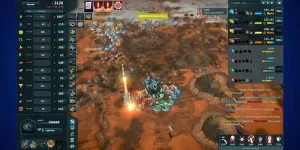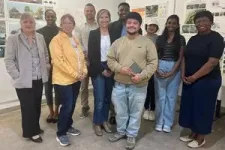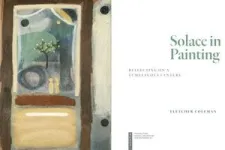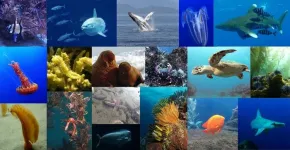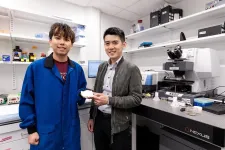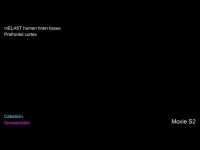(Press-News.org) The Office of the Vice President for Research and Innovation at The University of Texas at Arlington has granted 10 Research Enhancement Program (REP) awards valued at more than $130,000 to support new research initiatives.
The REP grant serves as seed funding for launching new research, providing a foundation for recipients to pursue future research and funding from external sources.
“UTA is committed to fostering a culture of innovation and research discoveries for our community of scholars,” said Kate C. Miller, vice president for research and innovation for UT Arlington. “These REP grants give our researchers the freedom to initiate creative endeavors aimed at making a difference for society, especially where the challenges are great. Our hope is that the seed funding will help professors turn their ideas into scholarly works that attract other organizations and investigators to support them going forward.”
The 10 award recipients are:
Landscape Architecture Assistant Professor Letora Fortune Anderson and Public Affairs Assistant Professor Emily I. Nwakpuda: The two received a $16,000 grant for their project on community-based design for green infrastructure. Their research will investigate the extent to which residents of Arlington's Johnson Creek understand their community's environmental conditions—such as the ecological impact on their households caused by the degradation of the waterway—and their perception of local floodplain mitigation efforts. The data collected from this project will help stakeholders address the community’s environmental needs.
Civil Engineering Assistant Professor Xiujuan Chen: Chen was awarded $12,000 for her project to improve PFAS water filtration. PFAS, or pre- and polyfluoroalkyl substances, are a group of man-made chemicals used to make everyday items like food wrapping, stain repellants, and nonstick cookware. PFAS chemicals do not break down easily and often end up in the water supply, causing health risks. Researchers have found that filtration processes using nanofiltration are effective, but they can often “foul” when organic materials bind to the membranes, reducing efficiency. Chen hopes to develop new nanocomposite membranes that can prevent fouling to improve filtration efficiency.
Art and Art History Assistant Professor Fletcher John Coleman: Coleman received an $11,683 award for his project “Solace in Painting: Conflict Art of the Asian Diaspora.” Contemporary art markets are often driven by an unspoken interest in trauma. But what of artists from underrepresented communities whose lives were altered by conflicts of the 20th century, yet who chose to never directly represent their traumatic experiences? “Solace in Painting” explores artwork by conflicted artists of the Asian diaspora who never produced overt “conflict art.”
Assistant Professors Leslie Ann Jennings and Regina Wilder Urban from the College of Nursing and Health Innovation: The duo received $16,000 to research social support, stress, and resilience among students preparing to apply to formal nursing programs. The insight gleaned into the well-being of nursing students will guide the researchers’ creation of course-specific content aimed at ensuring future nursing student successes, boosting retention rates, and equipping students with the tools necessary for their future nursing careers.
Nursing Assistant Professor Sohyun Kim, Social Work Associate Professor Noelle Fields, and Mathematics Professor Shan Sun-Mitchell. The team received $16,000 for its project to promote quality of life for persons living with dementia and their family caregivers. The professors will conduct a feasibility study by providing six weekly video family visits with residents living with dementia in nursing homes. The team will monitor changes in the stress levels of participants using wrist bands and will assess family relationship quality, feelings of loneliness, and overall quality of life via surveys.
Curriculum and Instruction Assistant Professor Taylor M. Kessner and Economics Professor Michael R. Ward: The professors received $16,000 for their project tracking eye movements of players using the off-the-shelf video game Offworld Trading Company. Tracking the movements will enable the team to create a cognitive map of how economists think about dynamic economics problems. This better understanding of expert thought processes will inform how and to what end educators will teach this critical 21st-century toolkit.
Public Affairs and Planning Assistant Professor Hannah Lebovits: Lebovits received a $9,950 grant for her project studying supportive housing for formerly homeless older adults. The grant will enable her to evaluate housing support services and determine their capacity to respond to the unique needs of homeless individuals over the age of 55. The findings will be used to inform policymaking and service provision efforts.
Mathematics Associate Professor Suvra Pal: Pal received a $12,000 grant to devise a precision-medicine machine-learning algorithm for all ailments. Currently, there are algorithms and decision trees that help people with cancer understand the likelihood of a cure along with the risks associated with treatments. With Pal’s new approach, the algorithm would be expanded to go beyond cancer treatments to also include risks and benefits associated with other diseases that may occur at the same time as cancer. Understanding the increased probability of additional ailments will help health care providers ensure adequate resources are available to offer the healthiest outcomes for patients.
Finance and Real Estate Professor David A. Rakowski: He received $12,000 to examine the funding of conflict-linked investments in Africa. Specifically, Rakowski plans to identify the characteristics of institutional investors who appear to discourage conflict in Africa through their investments, as well as foreign institutional investors whose funding is correlated with increased conflict. This work will inform investors and policymakers on the potential impact of foreign investment on conflicts in emerging markets.
Kinesiology Public Health Assistant Professor Feinuo Sun: She received a $10,483 grant to study county-level variations in chronic pain conditions among U.S. Medicare beneficiaries. The project is among the first to examine how geographic distributions vary across different pain-related conditions as well as to identify contextual determinants that shape the distributions. END
UTA awards more than $130,000 to spark new research
Research Enhancement Program grants serve as seed funding for new creative activity
2024-06-13
ELSE PRESS RELEASES FROM THIS DATE:
The Protein Society announces its Protein Science 2023 Best Paper recipients
2024-06-13
LOS ANGELES, CA
The Protein Society is proud to announce that the winners of the 2023 Protein Science Best Paper awards are Evan T. Liechty from the University of Colorado, USA, and Sophie Rizzo, from Lehigh University, USA.
Evan T. Liechty
Protein Science 2023 August;32(8):e4719.doi:10.1002/pro.4719
Analysis of neutral mutational drift in an allosteric enzyme
Evan T. Liechty1, Andrew Hren1, Levi Kramer1, Gregory Donovan1, Anika J. Friedman1, Michael R. Shirts1, Jerome M. Fox1
1Department of Chemical and ...
A conservation market could incentivize global ocean protection
2024-06-13
(Santa Barbara, Calif.) — The countries of the world agreed: Our planet needs more protection from human activity. And with the globe facing an assortment of environmental crises, they realized the plan needed to be ambitious. Thirty-by-thirty was their proposal: protect 30% of the planet by 2030. But while conservation is popular in principle, the costs of actually enacting it often stall even the most earnest efforts.
Three researchers at UC Santa Barbara have proposed a market-based approach to achieving the 30x30 targets in the ocean. They tested whether a system that allowed countries to trade conservation ...
New fabric makes urban heat islands more bearable
2024-06-13
This year has already seen massive heatwaves around the globe, with cities in Mexico, India, Pakistan and Oman hitting temperatures near or past 50 degrees Celsius (122 degrees Fahrenheit).
As global temperatures and urban populations rise, the world’s cities have become “urban heat islands,” with tight-packed conditions and thermal radiation emitting from pavement and skyscraper trapping and magnifying these temperatures. With 68 percent of all people predicted to live in cities by 2050, this is a growing, ...
Public more confident connecting increasing heat, wildfires with climate change than other extreme weather events, study finds
2024-06-13
Oregon State University researchers found that U.S. adults are fairly confident in linking wildfires and heat to climate change, but less confident when it comes to other extreme weather events like hurricanes, flooding or tornadoes.
The recent study found that politics and personal experience played significant roles in people’s responses: Self-identified Republicans were less likely than Democrats to attribute extreme weather events to climate change, though Republicans who had personally experienced negative impacts from extreme weather events were more likely to link them to climate change than those who hadn’t.
Looking at ...
Marine heatwaves devastate red gorgonians in the Medes Islands
2024-06-13
The increase in the frequency and intensity of marine heatwaves in recent decades is one of the effects of global climate change. A study by the University of Barcelona, published in the Journal of Animal Ecology, shows that the extreme heatwave of 2022 caused an “unprecedented” increase in mortality of the red gorgonian Paramuricea clavata, affecting 70% of the colonies located in the Montgrí Natural Park, the Medes Islands and the Baix Ter. According to the researchers, these results are “alarming ...
Only one in 20 therapies tested in animals reach approval for human use
2024-06-13
An analysis of reviews of translational biomedical research reveals that just 5% of therapies tested in animals reach regulatory approval for human use. The study, an umbrella review, published June 13th in the open access journal PLOS Biology, summarizes other systematic reviews and provides high level evidence that while the rate of translation to human studies is 50%, there is steep drop off before final approval. The authors argue that improved robustness and generalizability of experimental approaches could help increase the chances of translation and final approval.
Animal studies are used in basic research ...
Antimalarial compounds show promise to relieve polycystic ovary syndrome
2024-06-13
Plant-derived compounds best known for their antimalarial properties relieve polycystic ovary syndrome, a major public health problem that affects millions of women worldwide. These compounds, called artemisinins, achieve their affect by suppressing ovarian androgen production in multiple rodent models as well as in a small cohort of human patients, according to a new study. The findings not only underscore the versatility of artemisinins but reveal a promising new approach for preventing and treating the disorder. Polycystic ovary syndrome (PCOS) is one of the most common ...
Canine companions are indicators of human health, but more canine data is needed
2024-06-13
In a Perspective, Courtney Sexton and Audrey Ruple discuss how companion animals, especially dogs, are distinctly positioned to be sentinels of human health due to the environments they and humans closely share, but, say the authors, systems for improving data capture around dogs’ environments are critically needed. Humans share their environments closely with companion animals, leading to similar health risks such as respiratory illnesses, cancers, and cognitive dysfunction. Dogs, having cohabitated with humans for about 30,000 years, are particularly well-suited ...
Novel platform enables unprecedented imaging of the human brain
2024-06-13
A new platform enables simultaneous capture of protein expression, cellular morphology, neural projection, and synapse distribution in large-scale human brain tissues at multiple scales, researchers report. The system ensures the preservation of cellular architecture while enabling detailed imaging and analysis of large human brain tissue samples at unprecedented resolution and speed. The authors demonstrated its utility by processing whole human brain hemispheres to reveal pathological features of Alzheimer’s disease tissue. “We envision that this scalable technology platform will ...
Technologies enable 3D imaging of whole human brain hemispheres at subcellular resolution
2024-06-13
Observing anything and everything within the human brain, no matter how large or small while it is fully intact, has been an out-of-reach dream of neuroscience for decades, but in a new study in Science, an MIT-based team describes a technology pipeline that enabled them to finely process, richly label and sharply image full hemispheres of the brains of two donors—one with Alzheimer’s and one without—at high resolution and speed.
“We performed holistic imaging of human brain tissues at multiple resolutions ...
LAST 30 PRESS RELEASES:
Tracing the quick synthesis of an industrially important catalyst
New software sheds light on cancer’s hidden genetic networks
UT Health San Antonio awarded $3 million in CPRIT grants to bolster cancer research and prevention efforts in South Texas
Third symposium spotlights global challenge of new contaminants in China’s fight against pollution
From straw to soil harmony: International team reveals how biochar supercharges carbon-smart farming
Myeloma: How AI is redrawing the map of cancer care
Manhattan E. Charurat, Ph.D., MHS invested as the Homer and Martha Gudelsky Distinguished Professor in Medicine at the University of Maryland School of Medicine
Insilico Medicine’s Pharma.AI Q4 Winter Launch Recap: Revolutionizing drug discovery with cutting-edge AI innovations, accelerating the path to pharmaceutical superintelligence
Nanoplastics have diet-dependent impacts on digestive system health
Brain neuron death occurs throughout life and increases with age, a natural human protein drug may halt neuron death in Alzheimer’s disease
SPIE and CLP announce the recipients of the 2025 Advanced Photonics Young Innovator Award
Lessons from the Caldor Fire’s Christmas Valley ‘Miracle’
Ant societies rose by trading individual protection for collective power
Research reveals how ancient viral DNA shapes early embryonic development
A molecular gatekeeper that controls protein synthesis
New ‘cloaking device’ concept to shield sensitive tech from magnetic fields
Researchers show impact of mountain building and climate change on alpine biodiversity
Study models the transition from Neanderthals to modern humans in Europe
University of Phoenix College of Doctoral Studies releases white paper on AI-driven skilling to reduce burnout and restore worker autonomy
AIs fail at the game of visual “telephone”
The levers for a sustainable food system
Potential changes in US homelessness by ending federal support for housing first programs
Vulnerability of large language models to prompt injection when providing medical advice
Researchers develop new system for high-energy-density, long-life, multi-electron transfer bromine-based flow batteries
Ending federal support for housing first programs could increase U.S. homelessness by 5% in one year, new JAMA study finds
New research uncovers molecular ‘safety switch’ shielding cancers from immune attack
Bacteria resisting viral infection can still sink carbon to ocean floor
Younger biological age may increase depression risk in older women during COVID-19
Bharat Innovates 2026 National Basecamp Showcases India’s Most Promising Deep-Tech Ventures
Here’s what determines whether your income level rises or falls
[Press-News.org] UTA awards more than $130,000 to spark new researchResearch Enhancement Program grants serve as seed funding for new creative activity
